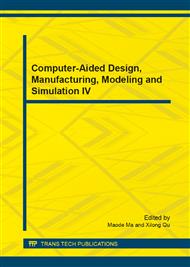p.761
p.766
p.770
p.775
p.782
p.787
p.794
p.798
p.806
Research and Implementation on Portability of Intelligent Pesticide Residue Detector
Abstract:
With the improvement of life quality, the people attach more importance to health, and have higher requirements on residue detection of harmful substance in foods. The existing traditional detection methods not only have complicated procedures, but also are very expensive, so it is urgent to develop an intelligent rapid residue detector of harmful substances. The paper researches the portability design of intelligent pesticide residue detector. It applies embedded system design method which implements control and processing functions of detector on a Xilinx-FPGA chip, which not only reduces system volume, but also reduces power consumption and cost. So it has great significance to develop rapid food safety testing instrument.
Info:
Periodical:
Pages:
782-786
Citation:
Online since:
October 2014
Authors:
Price:
Сopyright:
© 2014 Trans Tech Publications Ltd. All Rights Reserved
Share:
Citation:


